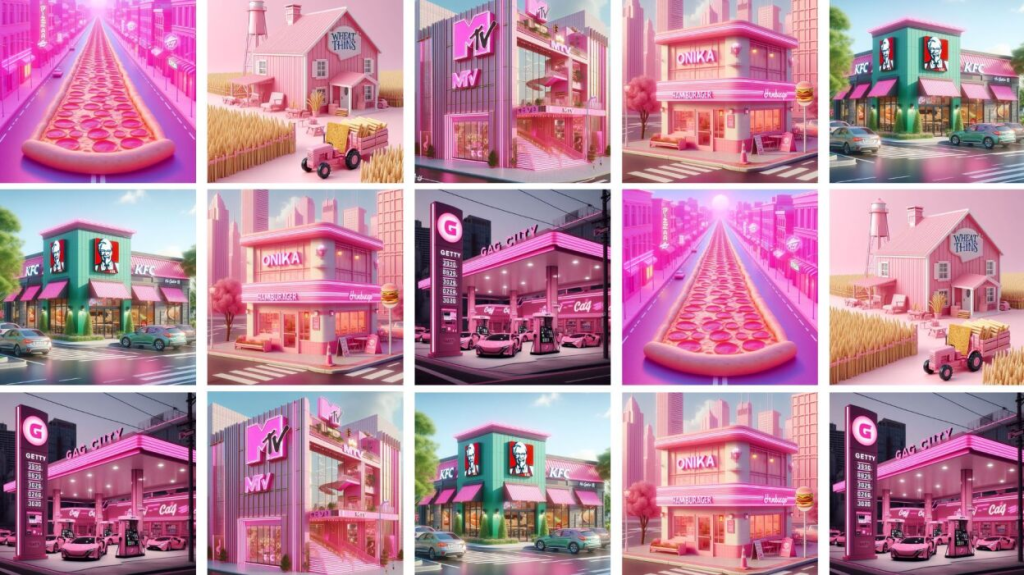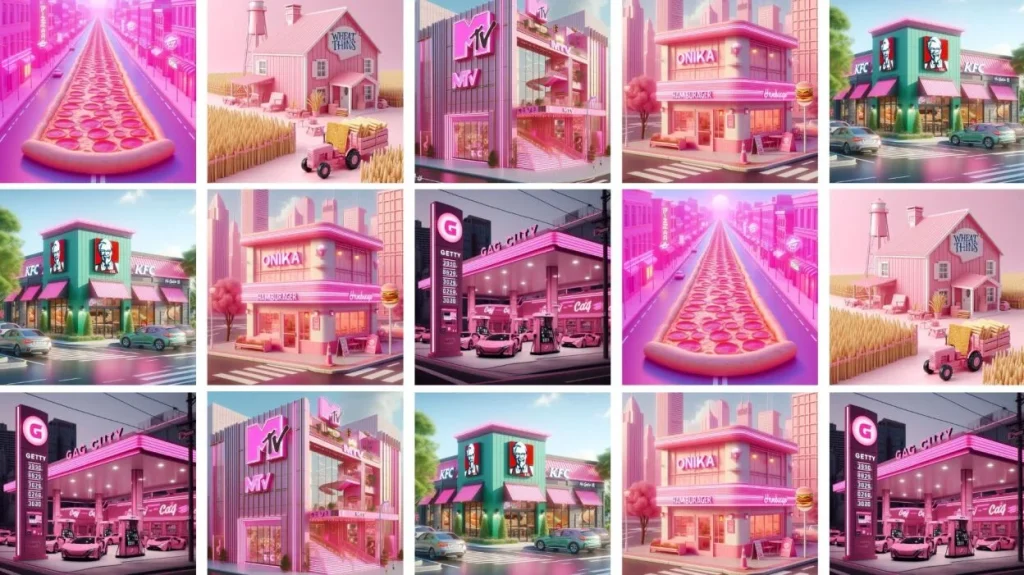
The rise of artificial intelligence (AI) has changed the way brands and artists use digital marketing. They now have access to new ways to promote, connect with their target audience, and boost social media engagement with AI. As it rapidly became more available to the public, a recent trend has seen fan communities taking AI into their own hands by creating viral content and amplifying marketing efforts in ways that we have never seen before to promote their favorite artists, movies, or brands.
In this article, we will explore how brands and artists can leverage fan communities as a digital marketing strategy and boost their social media engagement with AI, focusing on the huge phenomenon of “Gag City”.
How Nicki Minaj’s Fans Used AI and Social Media to Promote Pink Friday 2
In anticipation of Nicki Minaj’s new album Pink Friday 2, her fan community, the “Barbz”, took advantage of AI to create “Gag City,” a fictional, AI-generated digital world characterized by pink aesthetics and futuristic themes, inspired by Nicki Minaj’s brand identity, which is reflected on her Pink Friday 2 album cover. This initiative started when Nicki Minaj, in an attempt to build excitement within her target audience, assured her fan community on X, that this new album would take them to “Gag City”, meaning that it would leave them lost for words.
The term “gag” is a popular slang that is used to express astonishment or shock. In this case, it was applied to this imaginative city, reflecting the community’s excitement for the release of the new project. A few days later, fans started to generate AI images of how they would imagine “Gag City”, which eventually evolved into creating a whole digital world with its own society and rules as the trend went viral on social media.
The “Gag City” trend gained significant traction on social media platforms like X, with social media users all over the world sharing visuals generated with AI and stories set in this imaginary world. Some users even created voice-generated clips and remixes that made “Gag City” feel like a real place. This content, organically generated by social media users, leveraged earned media, which is essential in digital marketing strategies.
This smart marketing move of using social media and AI tools helped build anticipation and curiosity for Nicki Minaj’s new album and boosted pre-order sales, ultimately leading Pink Friday 2 to be the best-selling female rap album of the year in the United States.
This example shows the impact that creating a genuine connection with your target audience through online advertising platforms such as social media can have on your visibility and popularity. It also shows the possibility that initiatives led by fan communities on social media can function as a decentralized social media advertising campaign.
How Major Brands Capitalized on the “Gag City” Trend
Numerous brands saw the potential of AI-generated fan content and decided to engage with this phenomenon. Social media advertising plays a huge role in digital marketing, and companies that manage to align their messaging with trending topics can expand their reach organically.
Companies across various industries jumped on the “Gag City” trend to take advantage of the cultural moment to boost their social media engagement by promoting their products or services using the branding of Nicki Minaj’s “Gag City”.
For example, Spotify joined the trend on X, joking that “Gag City” was its latest “sound town”, a reference to one of their Spotify Wrapped features that assigns users a city based on their music taste. Converse declared that its shoes were the official footwear of “Gag City” residents. When a user posted an image of a pink Chili’s in Gag City on X, the restaurant chain quickly responded and posted an AI-generated image of pink smoke billowing from its restaurant to affirm its connection with the fan community. Trident Gum also joined the trend by sharing an image of its bright pink gum, declaring: “Pack your bags, BARBZ… it’s almost time to head to #GagCity.”
Many other companies, including Genius, Netflix, Complex, Dunkin’ Donuts, Pizza Hut, Oreo and more, claimed to have headquarters in “Gag City”, which all added to the trend’s momentum.
These examples show that brands can easily create relevant and real-time engaging content by inserting themselves in viral conversations on social media, such as X or TikTok.
By including trending cultural moments in their marketing campaigns, brands not only boost social media engagement and create brand awareness by reaching a more diverse audience, they also position themselves as part of the larger pop culture narrative in a way that feels organic and authentic, rather than just another opportunistic marketing attempt.
Bibliography
- De Luna, Elizabeth. (Dec, 2023). The best Gag City posts on X, in honor of Nicki Minaj’s Pink Friday 2, Mashable. From: https://mashable.com/article/what-is-gag-city-nicki-minaj-pink-friday-2
- Follett, Gillian. (Dec, 2023). Nicki Minaj and Gag City—how brands are joining the AI-generated trend on X, AdAge. From: https://adage.com/article/digital-marketing-ad-tech-news/nicki-minaj-and-gag-city-how-brands-are-joining-ai-generated-trend-x/2533011
- Murray, Conor. (Dec, 2023). Nicki Minaj Fans Are Using AI To Create ‘Gag City’—A Vibrant Pink World Inspired By Her New Album, Forbes. From: https://www.forbes.com/sites/conormurray/2023/12/07/nicki-minaj-fans-are-using-ai-to-create-gag-city-a-vibrant-pink-world-inspired-by-her-new-album/
- Ruderman, Jess. (Dec, 2023). Gag City roundup: The brands are tickled pink by Nicki Minaj’s album drop, PRWeek. From: https://www.prweek.com/article/1850533/gag-city-roundup-brands-tickled-pink-nicki-minajs-album-drop
